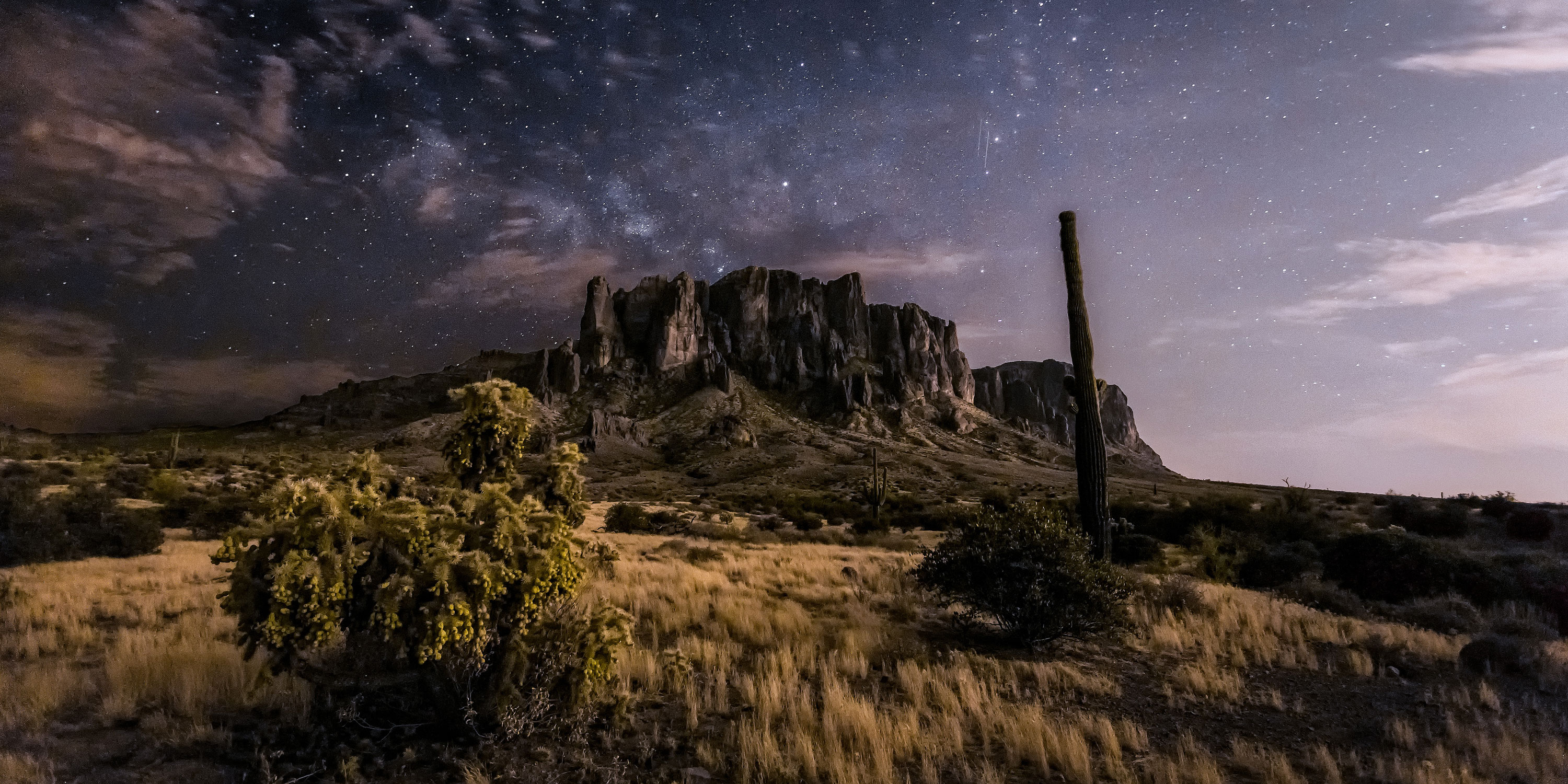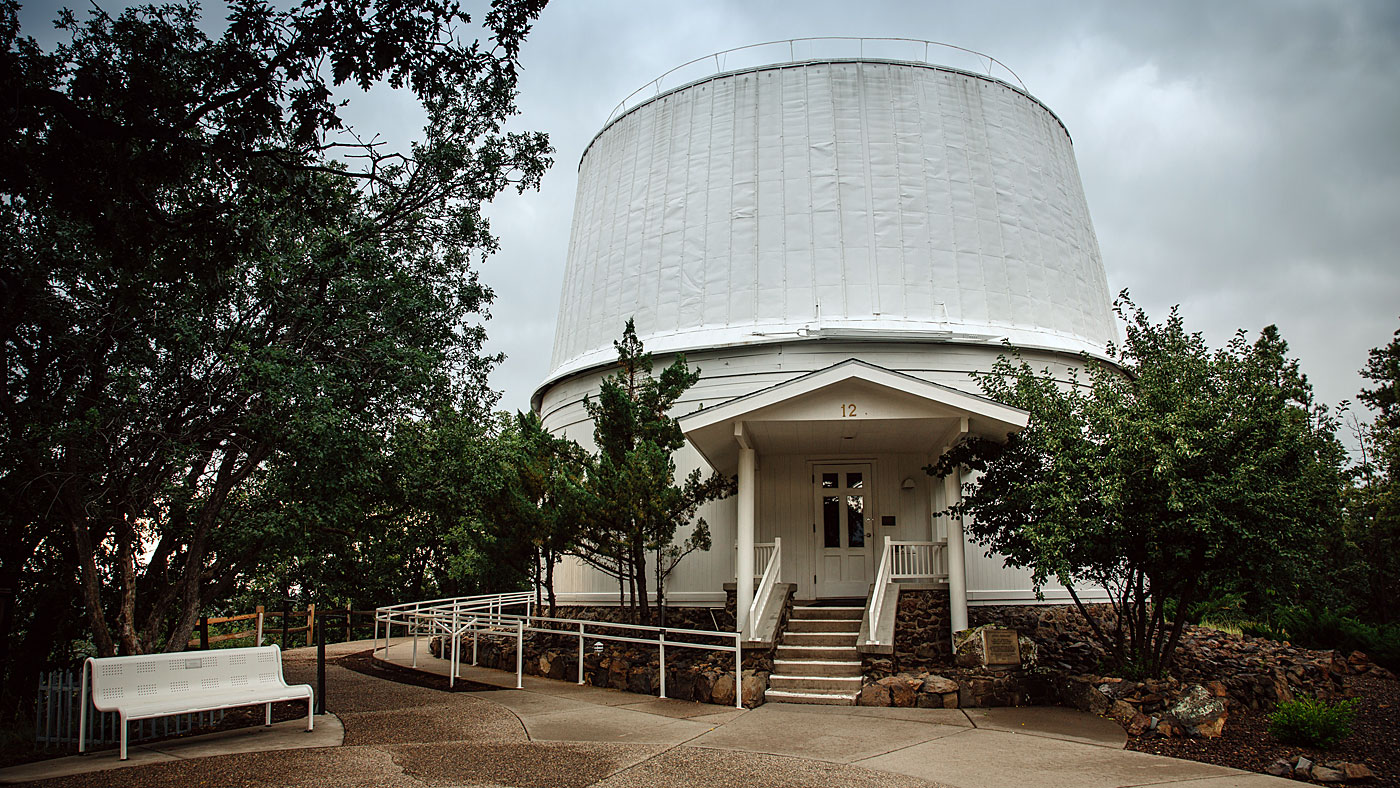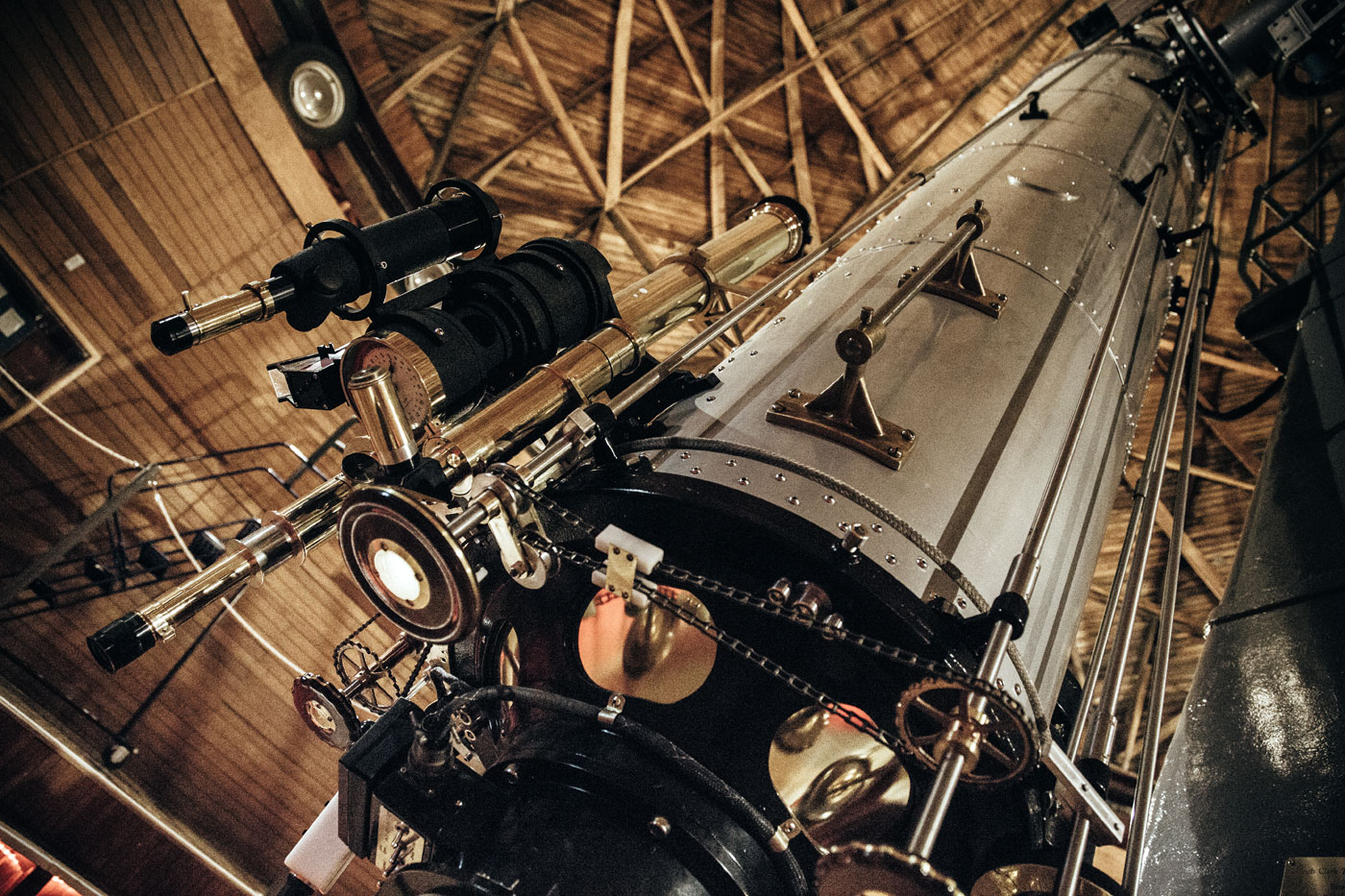Seeing stars in Arizona
The southwestern state's unlit skies are a boon for amateur astronomers

Empty deserts, dry air and dark skies make Arizona one of the world’s best destination for both amateur and professional stargazers.
Many of the state’s observatories, even those dedicated to serious scientific research, are open to the public, offering visitors a rare opportunity to gaze out into our galaxy and beyond.
Kitt Peak National Observatory
The Week
Escape your echo chamber. Get the facts behind the news, plus analysis from multiple perspectives.

Sign up for The Week's Free Newsletters
From our morning news briefing to a weekly Good News Newsletter, get the best of The Week delivered directly to your inbox.
From our morning news briefing to a weekly Good News Newsletter, get the best of The Week delivered directly to your inbox.
The mountains south of Tucson, in the far south of Arizona, “are heavenly for star-gazing”, says The New York Times, which explains the presence of the Kitt Peak National Observatory. It lays claim to “the largest, most diverse gathering of astronomical instruments in the world”, including two radio telescopes and more than 20 optical telescopes, some of which form part of an early-warning system for asteroids on collision course with the Earth.
Day-time visitors can make use of a heliostat and solar telescope to study the Sun, while the evening Dark Sky Discovery tour includes access to three research-grade telescopes and expert guidance in small groups, for $75 (£55) per person. For serious astronomers, private overnight viewings and photography sessions are available from $785 (£590), but must be booked at least a month in advance.
About 50 miles north is the city of Tucson, home to the Flandrau Science Center and Planetarium, where “an immersive, ultra-high-resolution projection system” provides a virtual tour of the Solar System.
Non-US visitors to Kitt Peak National Observatory must carry passports to pass through a border control point on the road from Tucson to Kitt Peak
A free daily email with the biggest news stories of the day – and the best features from TheWeek.com
Sedona Star Gazing
Sedona, northern Arizona, is a designated “dark sky city”, and the surrounding plains and mountains in in Red Rock State Park are all but free from light pollution. It’s a spectacular landscape during the day, and the ideal backdrop for an expedition with Evening Star Tours, whose Sedona Star Gazing programmes ($60/£45) “include an overview of the constellations by a professional astronomer, who will explain how ancient civilizations named the star groupings”, says The Arizona Republic.
As part of a small group, you will be guided out into the wilderness, provided with chairs and blankets and equipped with a high-powered telescope and pointed in the direction of planets, double stars and constellations. It could be a life-changing experience, according to National Geographic’s Shannon Switzer. “I could see why something so immense could put what seemed to be overwhelming problems into perspective,” she says, “especially with an expert by your side who could explain the science behind the magic.”
Stellar Adventures
Light pollution in Phoenix, Arizona’s state capital, means you won’t get the best view of the night sky within the city limits, but you don’t have to venture far into the surrounding desert for a prime stargazing experience. Stellar Adventures leads the way, with guided self-drive quadbike tours ($175/£130) during the day and chauffeured night-time 4x4 trips ($195/£139), for which you’ll be provided with night-vision goggles to see the desert’s nocturnal residents.

Lowell Observatory
In the north of the state, within striking distance of the Grand Canyon, lies the Lowell Observatory (above), perhaps the most romantic of Arizona’s stargazing destinations. It was here in the pine-clad hills overlooking the town of Flagstaff that Clyde Tombaugh discovered Pluto in 1930.
The observatory was founded in 1894 by the gentleman-astronomer Percival Lowell, whose original telescope, resplendent after a full restoration (below), is still in daily use. Visitors can try out the Victorian mechanical masterpiece during evening viewing sessions, which take place every day except Sunday, weather permitting.
Even on a cloudy day it’s worth a visit: the observatory’s guides provide a vivid introduction to the history of the site and the man who created it - who was determined to prove the existence of Martian civilisations by documenting the canal systems he thought he could see on the planet’s surface.

Top photo taken near Phoenix by CEBImagery
-
 How to financially prepare for divorce
How to financially prepare for divorceThe Explainer Facing ‘irreconcilable differences’ does not have to be financially devastating
-
 Why it’s important to shop around for a mortgage and what to look for
Why it’s important to shop around for a mortgage and what to look forThe Explainer You can save big by comparing different mortgage offers
-
 4 ways to save on rising health care costs
4 ways to save on rising health care costsThe Explainer Health care expenses are part of an overall increase in the cost of living for Americans
-
 See the Northern Lights from these bucket list destinations
See the Northern Lights from these bucket list destinationsThe Week Recommends The dazzling displays can be spotted across Iceland, Sweden and parts of Canada
-
 Friendship: 'bromance' comedy starring Paul Rudd and Tim Robinson
Friendship: 'bromance' comedy starring Paul Rudd and Tim RobinsonThe Week Recommends 'Lampooning and embracing' middle-aged male loneliness, this film is 'enjoyable and funny'
-
 The Count of Monte Cristo review: 'indecently spectacular' adaptation
The Count of Monte Cristo review: 'indecently spectacular' adaptationThe Week Recommends Dumas's classic 19th-century novel is once again given new life in this 'fast-moving' film
-
 Death of England: Closing Time review – 'bold, brash reflection on racism'
Death of England: Closing Time review – 'bold, brash reflection on racism'The Week Recommends The final part of this trilogy deftly explores rising political tensions across the country
-
 Sing Sing review: prison drama bursts with 'charm, energy and optimism'
Sing Sing review: prison drama bursts with 'charm, energy and optimism'The Week Recommends Colman Domingo plays a real-life prisoner in a performance likely to be an Oscars shoo-in
-
 Kaos review: comic retelling of Greek mythology starring Jeff Goldblum
Kaos review: comic retelling of Greek mythology starring Jeff GoldblumThe Week Recommends The new series captures audiences as it 'never takes itself too seriously'
-
 Blink Twice review: a 'stylish and savage' black comedy thriller
Blink Twice review: a 'stylish and savage' black comedy thrillerThe Week Recommends Channing Tatum and Naomi Ackie stun in this film on the hedonistic rich directed by Zoë Kravitz
-
 Shifters review: 'beautiful' new romantic comedy offers 'bittersweet tenderness'
Shifters review: 'beautiful' new romantic comedy offers 'bittersweet tenderness'The Week Recommends The 'inventive, emotionally astute writing' leaves audiences gripped throughout